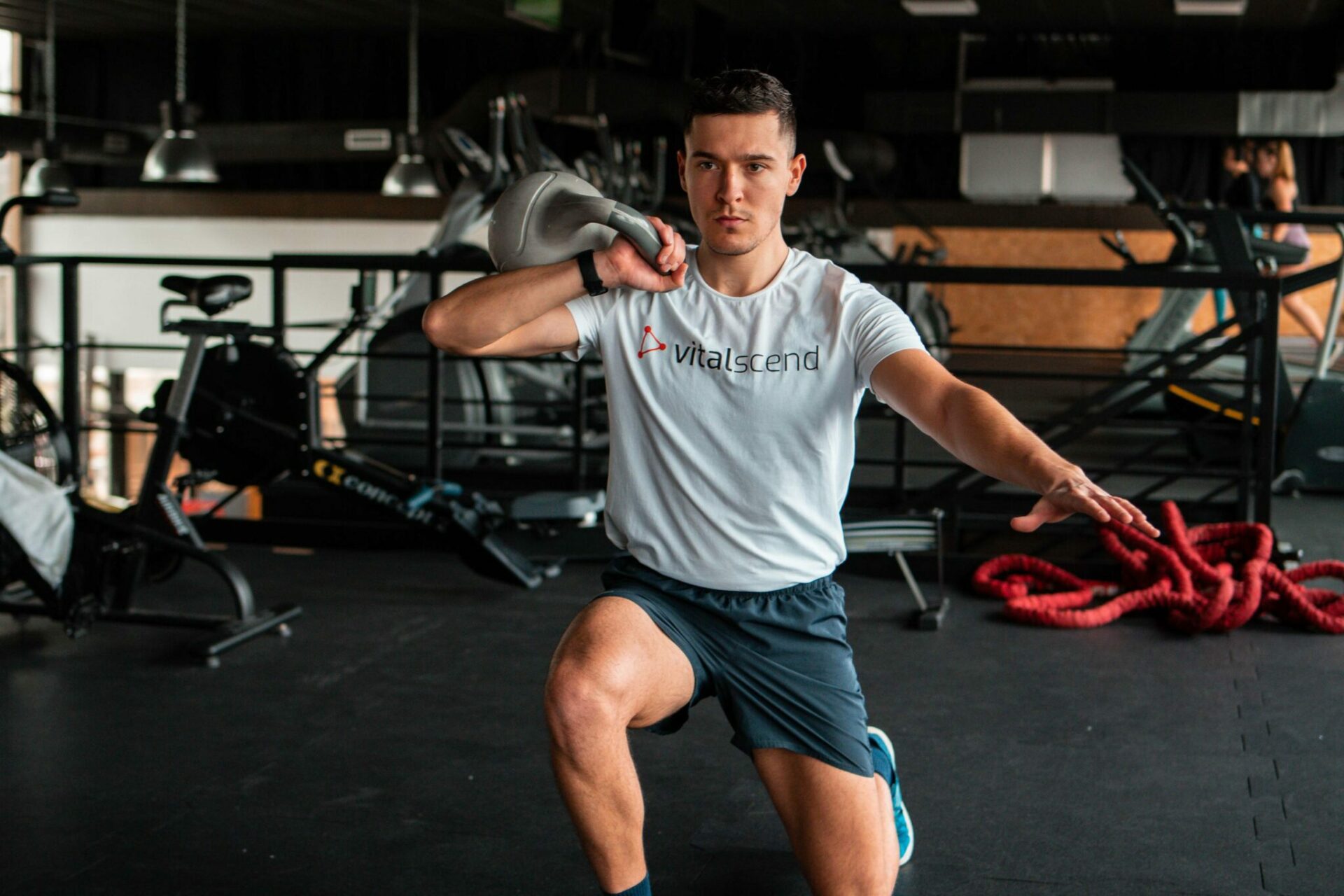20 Benefits of Strength Training on Health & Fitness
What is Strength Training?
Strength Training, also known as weightlifting or resistance training is a way of fitness exercise that uses external resistance such as bands, weights, or machines and can through exercise, stimulate muscle growth. There are many different benefits of strength training besides muscle growth and testosterone increase.
It is one of the most popular ways most people work out because it is very efficient in improving our health & fitness level, body composition, both losing fat and gaining muscle, which is healthy for our body. This article covers 20 different ways, strength training makes us healthier. Enjoy!
How Can Resistance training Impact your Health?
Besides the improvement, you can see in your body mass index and body composition, strength training doesn’t just help you build muscle and lose fat but improves your body in many different ways.
Even cardiovascular health can be improved, through controlling blood sugar and improving blood flow. But there are thousands of other benefits you may have never thought of including libido and mood boost, posture and confidence improvements, longevity, bone strength, and many others.
Is Weightlifting better in the long term than running for optimal health and fitness?
The most common question that people ask is whether cardio training beats weightlifting in terms of its effects on health. The answer is not so simple.
Both activities are great in their unique way for different parts, or systems in the body. Resistance training is mainly focused on body composition, so fat loss, muscle gains, and energy production as well as metabolism boost. Running on the other hand is great for your cardiovascular health, calorie burn, and full-body oxygenation.
If I had to pick one, it would be weight training. Why? Because you can simply train in a manner that boosts your heart rate while with running you cannot manipulate it to strengthen your upper body much.
That being said, of course, I think the best combo is strength training combined with cardio, both of which can be done at the gym. Cardio doesn’t have to be running on a treadmill, it can be any fun activity like swimming, boxing, basketball, or jumping rope, take that into account.
Health Benefits
Here is the list of the top 20 health benefits of resistance training on your body. Ranging from strength gains, and muscle gains up to cholesterol and blood sugar control.
1. Increases Muscle Mass
One of the most obvious reasons for weightlifting is to build muscle and become stronger. While these two have something in common, they are not completely the same. To become stronger means you can lift more (independent of time), to increase muscle mass means your muscle cells grow bigger, and to become powerful means you can lift more weight in less time.
Science has shown that a combination of mechanical tension and metabolic stress is the best way to increase muscle hypertrophy. This workout protocol would range from 3-6 sets per muscle group of 10-12 reps with short rest intervals of 60 seconds in between. (1)
When we continually engage our muscles in resistance training, pushing against an external force, it sustains damage and the muscle fibers are partially ripped off. After sufficient rest time and high-quality amino-acid, the muscle regenerates and is able to push more weight back in the gym. This is how our muscles grow and get stronger.

2. Speeds up your Metabolism
Although your metabolism speed is highly determined by genetics, age, and sex, being active can play a significant role in it. Increasing the speed of your metabolism means you can run all the chemical processes in your body faster, which leads to reduced fat accumulation and increased calorie burn.
Your metabolism is highly affected by exercise and by doing the proper one, you can speed it up. You’ve probably heard of the after-burn effect of the HIIT exercise protocol, meaning your metabolism is faster, and you burn more calories.
- This is what happens in men with strength training. A study has found that strength training significantly boosts resting metabolic rate RMR by 9%, but in women, these changes weren’t significant. (2)
- Another study found that actually habitual fitness activity in women active 9 hours per week, for more than 10 years the RMR, resting metabolic rate was higher by around 67 kcal per day while the body fat percentage was 18.9% for active and 28.8% for sedentary women, aged 35-50 years. (3)
This gives us an insight that fitness training, especially habitual can play a major role in boosting your metabolism, which means you burn more calories, create energy, and process your food faster.
3. Improves Mood
When it comes to any type of exercise, the primal reason we are doing it is that we feel good about ourselves. This happens because exercise triggers endorphins such as dopamine and serotonin, making us feel happy, satisfied, or even high (running high) after exercise.
In older adults, studies have shown that 24-week resistance training has positive effects on mood. In fact, improvements in tension, anger, and confusion were shown as well as total mood scores, excluding the scores for fatigue, vigor, and depression. (4)
Another study found that strength training was shown to reduce depressive symptoms in individuals that are at high risk for Type 2 Diabetes. (5)
4. Strengthens your Bones
Since osteoporosis is pretty common in post-menopausal women, strengthening your bones and improving your bone density can be a great side effect of lifting weights. While it is true that we shouldn’t overdo it, especially in older age, with properly structured training (posture, reps, sets, weights) resistance training may increase bone density.
By increasing the weight-bearing stimulus, the bone can regenerate and produce more cells. By exerting mechanical load on the bones, resistance training can lead to an increase in bone strength. It is specifically beneficial for the cortical bone, however, there is no data on the anti-fracture effect of resistance exercise. (6)
A review on PubMed has shown that many longitudinal and sectional studies find a positive correlation between bone density and resistance training. Plus strength training can add muscle mass which supports your joints, and improve the strength and balance of your body. (7)

5. Improves Cardiovascular Health
Weightlifting, as well as any other exercise, can improve your cardiovascular health by affecting blood sugar control, improving blood flow, and reducing cholesterol.
Studies show that cardio alone improves cardiorespiratory fitness, while weightlifting affects strength. On its own, neither was effective in reducing blood pressure, but a combination of both was effective. Combined training shows a reduction in cardiovascular disease risk factors. (8)
Another article in Harvard Health shows that weightlifting is great for your heart and it can lower the risk of heart attack or stroke, as well as cardiovascular exercise. (9)
The conclusion is that both weightlifting with cardio is the best combination to improve your heart health.
6. Prevents Joint Pain
Joint pain can both be prevented and caused by weightlifting. A lot of it depends on the amount of training, weights, and correct posture we are using.
Multiple articles online show that people with osteoarthritis never felt better than when introduced to strength training. The logic behind this is that once the bone sustains some mechanical load, this stimulus causes regeneration and formation of new bone cells improving our bone density.
In an article published in 2015, on Arthritis health, we can see that researchers have found that strength training reduces pain by 35% while increasing lower limb function and strength. (10)
Losing weight, improving joint functionality & lubrication, and increasing muscle strength and balance can also help with reducing arthritic pain and inflammation.
7. Boosts Mental Resilience
Strength training is a miracle when it comes to mental resilience. Call it Mental toughness or mental strength, resistance training can improve it.
When we exercise we tend to automatically improve our posture, stand tall and feel stronger. Lifting weights translate to higher mental strength and confidence in everyday life. Some of these changes come due to an increase in sex hormones and endorphins, the good-feeling chemicals.
Think about it, if you can focus and push at the gym, you are slowly building mental strength and become more self-disciplined, which translates into your work, relationship, and life overall.
8. Increases your Energy Levels
Although over-training can cause higher cortisol levels and may result in chronic fatigue, structuring your training, healthy eating habits and proper rest can actually make you more energetic. But how does Strength Training Increase Energy and Fight Fatigue?
Think of it like this, the gym is like a place where the sweet spot is. We feel tired and fatigued, but when we enter the gym the first 10 minutes are hard but then we are running, lifting, or boxing with no problem. This is because you have acutely increased your energy.
Studies have shown that both resistance training and cardio can increase your energy expenditure, as well as free-living energy expenditure separate from exercise training. (11)
The reason behind this is a more efficient use of fuel (food) and higher heart work requirements which mean higher oxygen intake. And nutrients, water, and oxygen are the key ingredients for energy creation.

9. Boosts Libido & Sexual Hormones
If you go back to our evolution, or even now, you find fit people more attractive in general. That is because being fit translates to a higher rate of fertility which subconsciously makes our reproduction system flow along.
When we exercise, especially with resistance training, our bodies secrete anabolic hormones like HGH and Testosterone. There is also the secretion of hormones which are associated with a boost in sexual desire and libido.
- Strength training (12 weeks, 8-10 reps) in both young and elderly subjects lead to increase of Growth hormone by 44.9% and 3%, respectively. (12)
- In women (133) with sexual dysfunction related to obesity and inactivity – arousal was predicted by cardiovascular endurance and self-concept. Both are related to physical fitness, hence why the connection between fitness and desire is so strong. (13)
10. Increases Fat-Loss
When we think of losing fat, usually we think of cardio training. There is controversial research, both showing that aerobic training is far more efficient than resistance training in terms of fat loss or weight loss. (14) and the other way around
The reason for this is simple, you add muscle mass, your metabolism is faster, you are calorie efficient, and you lose more fat. Even though the total number on the scale may not change, strength training improves your body composition and adds muscle to your frame which weighs more.
In a 2018 study, 40 premenopausal women volunteered. A quarter of them had only resistance training, or just diet, or a combination of both, plus a control group. Resistance training + Diet was shown most effective for fat loss, superior to all other three groups. (15)
Examined in 149 older adults for 18 months, results show that optimal physical fitness, muscle mass maintenance, and weight loss were best with weight loss + resistance training protocol, as opposed to weight loss + aerobic training. (16)
11. Build Self-Confidence
Self-confidence has a lot to do with our psychology. But our brain is highly affected by the chemicals that it runs on. A healthy diet and exercise can balance hormones and increase the endorphin, the good-feeling chemicals like serotonin but also affect our satisfaction and motivation (which is crucial) by increasing dopamine levels.
A 2015 study has shown that strength training in midlife, in older rural women significantly improves self-perception, various dimensions of body image, improved quality of life, comfort, satisfaction as well as behavior in physical activity. (17)
12. Improves your Posture
While it may seem contradictory to a lot of people, actually weightlifting can improve your posture. People think that weightlifting causes lower back pain and joint degeneration, but for the most part corrective exercise and properly structured strength training with optimal posture, optimal load, reps and sets can actually improve our posture and reduce back pain, plus lubricate our joints.
It goes without saying that too much training, and too heavy a load without proper adaptation can both cause injury and joint degeneration, as well as ruin your posture due to muscle shortening. Muscle shortening only happens when you fail to stretch or perform exercises in a limited range of motion (ROM) over time.
But for the most part, proper strength and flexibility training improves your posture because it:
- Increases the strength of scapular retractors, Lower trapezoid muscle that extends your chest, preventing slouched shoulders.
- Strengthens spine stabilizers, torso rotators, and lower back muscles reducing overall back pain and increasing stability.
- Strengthens gluteus muscles and abdominals, which usually cause Lordosis & lower back pain
Stabilizes the main joints like hip, shoulders, and spine. - Improves the mobility of your hips (squat) and shoulder (overhead press) which correlates with better posture.

13. Reduces markers of Inflammation
To be clear, when we exercise, especially when we lift weights, inflammation shows up. It is the natural response of our body when we rip the muscle fibers off. That inflammation is a sign we should rest for a bit until the regeneration process starts.
But this inflammation is not bad, it Is necessary. The chronic inflammation that is related to cardiovascular or diabetic diseases is. The risk is measured by inflammation markers such as IL-6, IL-4, CRP, and Cytokines.
- Even though resistance training causes acute inflammation bout, when it comes to chronic low-grade inflammation-related diseases, the data shows that RT may prevent, reduce or delay it. (18)
- In non-obese women, after 12 months of home, small-volume exercise there was a reduction of C-reactive protein the first 6 months, followed by weight loss. (19)
So both strength training and aerobic exercise, with the addition of water and a healthy diet can reduce chronic inflammation.
14. Keeps your Blood Sugar Steady
Exercise may be able to reduce and stabilize blood sugar levels along with healthy nutrition and healthy lifestyle choices.
Meta-analyses found that high-intensity resistance exercise can be more beneficial in stabilizing blood sugar or insulin levels in comparison to low-to-moderate intensity, in patients with Type 2 Diabetes. (20)
Resistance training may also exert some positive effects such as increased insulin sensitivity, and glucose tolerance, restore metabolic flexibility, and increase GLUT4 translocation in skeletal muscles, as shown in the 2013 review. This may reduce metabolic risk factors. (21)
15. Increases Longevity
When it comes to longevity, it is widely known that those who exercise live longer. But the theory doesn’t stop there, what kind of exercise can do this is important.
Although aerobic exercise is linked to longevity, mainly because the bodies that live the longest are skinnier, vital, and have more oxygen, water, and energy which is a characteristic of a runner’s body, strength training can significantly affect our lifespan too.
In fact, when lifting we secrete human growth hormone which is the main regeneration hormone that decreases with age. Keeping higher levels of it, naturally stimulated by exercise may help us live longer, plus muscle strength and resilience reduce strain on the joints and improves our functional mobility.
16. Increases Connective tissue strength and Resilience
As we all know, almost all athletes lift weights. Even after an injury, athletes perform specific strength-training protocols to heal up faster. This is because these movements when done properly can improve our connective tissue strength by applying load that the tendon has to adapt to. (22)
According to an article written by Mark Sisson, strength training that trains our muscles, also trains our tendons. The problem with tendon regeneration is they take in fewer nutrients due to poor blood flow. This is why the adaptation of a tendon takes longer to respond. (23)
Some types of training that help with increasing tendon strength are “negatives” or eccentric exercises, High Volume or High-Intensity weightlifting, Plyometric and Myofascial bodywork.

17. Improves your Balance & Control
As an ex-basketball player, one of the first significant differences I noticed after a real, weightlifting training program was improvements in stability and overall control. I was able to move in patterns that I wouldn’t be in control of at all.
The reason for this is that your muscle can withstand higher loads, but also the tendons are more resistant and ready to stop or propel you. It helps in all types of athletic movements, but of course, each sport has a specific weightlifting exercise and functional movement that helps with the exact specific movement.
18. May Lower Injury Risk
Research has shown that resistance training promotes growth and increases the strength of ligaments, tendons, and the strength of junctions like tendon to bone or ligament to bone. Resistance training also increases bone mineral content which aids in the prevention of skeletal injuries like overuse or fractures. (24)
One of the most important reasons for training with weights, besides improvement in performance and strength gains, is its potential to reduce injury.
Aside from these structural and anatomical changes, practicing resistance training that is properly structured, with specific movement patterns can improve our control, awareness, and balance in the specific movements required in a given sport.
Another study done in elite young soccer players has shown that resistance training significantly reduced injury risk, from 13 injuries in the control group to 4 injuries in the experimental group, and improves performance when it’s structured and scheduled accurately and efficiently. (25)
Another analysis of six studies that involved more than seven thousand participants aged 12-40 has shown that strength training volume and intensity were highly correlated with reduced injury risk. (26)
19. Boosts Brain Performance
As we age, both our brains and muscles shrink. Research has shown that resistance training that helps preserve muscle mass and strength can positively impact our aging and brain performance too. Lifting weights can initiate functional brain changes which may improve executive function and lead to reduced white matter atrophy. (27)
Weightlifting can also improve our mood, by naturally boosting the secretion of endorphins. Resistance training has been associated with a reduction in anxiety, reduction in pain intensity, improvements in self-esteem, and reduction in depressive symptoms. (28)
Fun Fact
BDNF plays a major role in brain cell regeneration, growth, maturation, and maintenance of nerve cells. A study published in 2017 found that resistance training, the kind that stimulates hypertrophy (muscle growth) and emphasizes to-fatigue muscle training may increase Brain-Derived Neurotrophic Factor (BDNF).
20. Improves Cholesterol Profile
Cholesterol profile is the ratio of all types of cholesterol we have. Mainly it is known that LDL is the bad guy, while HDL is the good cholesterol you want to have more of.
A comparison between the effects of aerobic training, resistance training, and combined training has shown that all exercise activity is potentially beneficial for cholesterol improvement. Regular activity increased HDL cholesterol and maintained LDL & triglyceride levels. To further lower LDL levels, higher-intensity exercise is required. In this case, the resistance training was beneficial when bigger muscle groups were trained, with more repetitions and sets. (29)
Another study shows that Weight training was efficient in increasing HDL cholesterol levels, decreasing LDL cholesterol, and improving plasma lipids which can theoretically improve heart health. (30)
Research Limitations
*Studies have some limitations, important to evaluate the validity of their results. Here’s a highlight of some and NOT ALL studies (and limitation), shown in this article, for context.
- Reviews include small number of studies available.
- Further research specifically focused on the effect of resistance training on brain function and cognitive function with more controlled variables.
- Aged data or data older than 10 years *2010, 2004, 2001, 1989 Comparative study.
- Samples taken from very specific population *young soccer players, older rural women, postmenopausal women, pre-menopausal women.
- Weak control of external factors *hormones, genetics, sleep quality, muscle memory, nutrition,
- Conflicting research on the effect of resistance training on inflammation and cytokines.
Use of self-reported values through questionnaires *gives subjective values.
- Relatively small sample sizes * (n)10 RT only, (n)10 Diet, (n)10 Diet + TR.
- Use of submaximal treadmill test instead of maximal effort test to asses cardiorespiratory fitness.
conclusion
Resistance training offers many benefits for the human body when structured correctly. While overdoing it can make you fatigued, inflamed, and injured, a correct progressive strength workout program is beneficial for your body.
Potential Benefits
- Benefits range from heart health (oxygen uptake, blood flow, cholesterol profile), anatomical changes (tendon adaptation, muscular strength, resilience), hormonal changes (libido boost, testosterone, and anabolic hormone boost) up to confidence and self-image alteration (improved mood, self-perception, confidence, and posture).
- In terms of longevity, heart health, and body composition, resistance training is best when combined with shorter bursts of cardio, to further speed up the metabolism, increase energy production, improve blood flow and oxygenation.
Frequently Asked Questions
Cardio vs. strength, which one is better for overall health?
The answer to this is complex. You should always opt to include a balanced ratio of both strength training and cardio in your workouts. The reason is that cardio is more aerobic exercise, great for burning calories, improving blood flow and oxygenation while the anabolic side, growth, strength, and regeneration is highly improved by strength training.
Can strength training improve brain health?
Yes, Strength training can improve and support optimal brain function, executive function, and neuroplasticity. It maintains optimal protein synthesis which is crucial for both your muscles and your brain, plus naturally boosts secretion of HGH, the hormone which supports growth and regeneration, allowing for healthy brain aging. Some studies show that it can also improve mood, increase white matter, and BDNF levels.
Is weightlifting healthy, if it improves body composition, resulting in fat loss and muscle gain?
Improving your body composition alone can improve your health. Overweight or obese people are at higher risk of cardiovascular diseases in general. Since weight training increases muscle mass, boosts your metabolism, helps you lose fat, and improves circulation, it is considered healthy.
Can strength training improve heart health?
Strength training, along with cardio can improve heart health due to its effects on cholesterol profile, blood flow, and blood pressure. Resistance training can increase HDL cholesterol while reducing LDL cholesterol, improve blood circulation, and lower or stabilize blood pressure.








